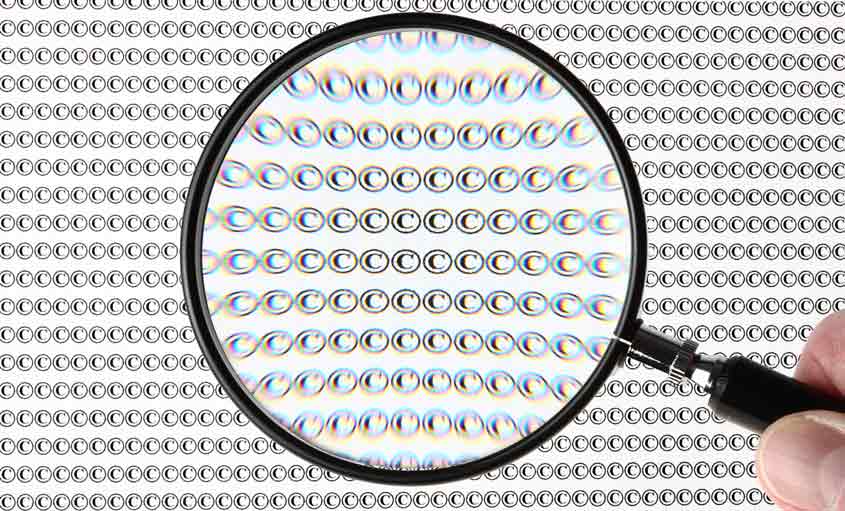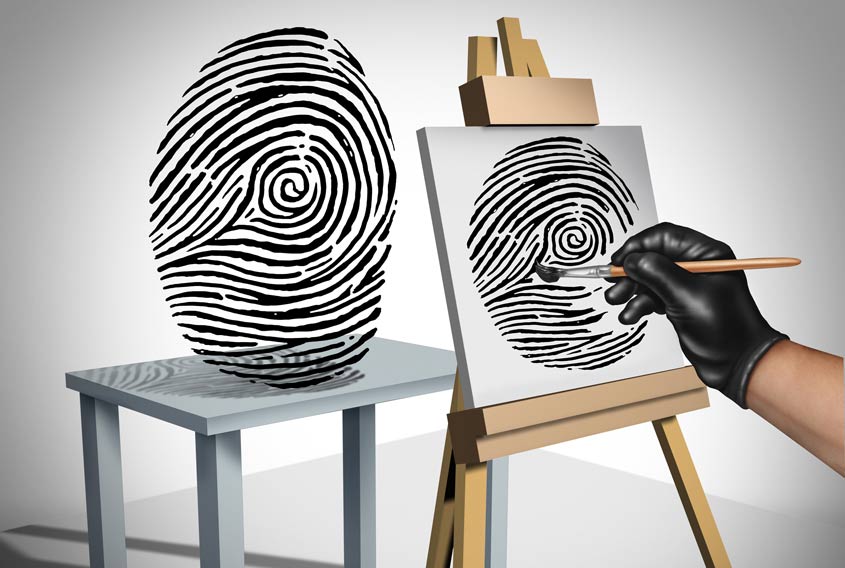
Is plagiarism unlawful?
By Owen Dean, Spoor & Fisher, Claremont, South Africa
“Plagiarism” is a much misunderstood and misused term in common parlance. In layman’s terms, it is generally used to convey the notion of copying or reproducing the work of another in a clandestine manner, usually without the permission of the author. It is often used as a synonym for “copyright infringement,” and it is generally thought to amount to the same thing. Presuming that plagiarism is copyright infringement by another name, it would naturally be unlawful. But is this perception correct?

The New Shorter Oxford English Dictionary defines the verb “plagiarize” as follows: “Take and use as one’s own (the thoughts, writings, inventions, etc., of another person); copy (literary work, ideas, etc.) improperly or without acknowledgement; pass off the thoughts, work, etc. of (another person) as one’s own.” “Plagiarism” is the noun form of this verb.
The term is said to have its origins in the writings of Martial(is), the Roman poet, who in one of his works drew a parallel between his poems and freed slaves; he termed another poet who had misrepresented his (i.e. Martial’s) works as being his own, a “plagiarius,” or, an abductor, of them.
Important differences
Although they have certain common elements, plagiarism and copyright infringement are not the same. There are important differences. Copyright protects works embodying intellectual output. The works must exist in a material form. Copyright has as its subject matter the material expression of intellectual output, not the ideas, information, etc. embodied in the material expression. As evidenced in the dictionary definition, plagiarism additionally covers thoughts, inventions, ideas, and the like. All these conceptions are not, per se, protected by copyright. Plagiarism is thus a wider concept than copyright infringement. In a sense, copyright infringement may broadly be considered to be a species of the genus “plagiarism.”
Copyright
Copyright is a so-called “creature of statute” and its ambit is circumscribed by the life-giving statute. The “works” (expressed in a material form) protected by copyright are primarily (for the present purposes) literary, musical, and artistic works, as conceptualized in copyright law. Copyright has a limited duration; in general, the term of protection is the lifetime of the author plus 50 (or 70, in some countries) years.
The copyright in a work is infringed by reproducing, adapting, and performing various other acts, without the authority of the copyright owner, in relation to a substantial part. There are exceptions or exemptions from copyright infringement that allow unauthorized reproduction in certain circumstances. Copyright can be infringed by unauthorized acts for purely personal use. Copyright can only be enforced by its owner or by a duly appointed exclusive licensee. The remedies flowing from copyright infringement comprise an interdict or injunction restraining the infringing conduct, damages, and delivery of infringing copies.
Plagiarism
Plagiarism is an ethical norm or standard. It is not, per se, a rule of law. Perpetrating plagiarism violates the ethical norm, but it does not in itself constitute unlawful conduct. The rule of plagiarism finds particular expression in the academic environment. Someone who commits plagiarism is seen as acting dishonorably and warrants exposure and societal condemnation; it is a blight on his or her integrity and reputation.
The seriousness with which plagiarism is considered in academia is typified by the following quotation from the Stellenbosch University Policy on Academic Integrity: The Prevention and Handling of Plagiarism, 2010 “All cases of plagiarism amount to a serious offence, which can have dire consequences for the person concerned, including suspension or expulsion (in the case of a student) or dismissal (in the case of a member of staff) from the University, besides possible criminal or civil action.”
Most South African universities and academic institutions have similar policies. Such a policy statement transforms the universal ethical norm into a censurable offense (in the figurative, non-criminal sense) according to the rules governing the conduct of the university’s community.
The ethical rule regarding plagiarism covers (and essentially protects) works in the copyright sense, but it also covers other intellectual outputs that consist of ideas, concepts, theories, and the like, irrespective of whether or not they have been reduced to a material form. The intellectual output enjoys protection indefinitely. Outputs that have been in existence for centuries continue to enjoy this form of protection forever.
Plagiarism, in essence, amounts to a person making a misrepresentation publicly as to the authorship of an output that he or she has made; he or she represents that he or she is the original author of that output. The antidote to plagiarism is the accreditation of source in favor of the original author of the output.
The plagiarism rule is violated by copying intellectual output in whatever manner or form, even if the original author of the output agrees to a copyist using it. As long as the copyist incorrectly represents that it is his or her own authorship, and does not accredit source in the original author, the consent of the original author is irrelevant. The focus is on the truth of the representation made by the copyist.
In the event that output is copied, the quantum of the copied output is irrelevant. Subject, perhaps, to the de minimis principle – a legal doctrine to dismiss frivolous matters – it is not necessary that a substantial part of the output be copied to violate the rule. On the other hand, copying an output for purely personal use does not constitute a violation of the rule, as in this situation no misrepresentation as to authorship is made to any third person.
Plagiarism can be, and generally is, censured by an interested third party, for instance a university, irrespective of whether the original author of the output raises an objection. The “wrong” of plagiarism is visited on third parties who are misled by the misrepresentation of authorship as much as on the original author. Enforcement of the rule against plagiarism thus falls, in the first instance, with the victims of the misrepresentation. The sanctions for plagiarism comprise dishonor, discredit, and perhaps even vilification of the plagiarist, and, depending on the circumstances, his or her suspension, expulsion, or dismissal from membership of a body. Violation of the rule carries no economic or proprietary sanctions, such as those a court would impose on someone infringing a legal right.

Copyright infringement versus plagiarism
A classic case of infringement of copyright in, for instance, a literary work (existing in a material form, such as a book, article in a journal, and so on) entails someone reproducing a substantial part of that work without the permission of the copyright owner and without any accreditation of the author of that work. Such an act of infringement would also constitute plagiarism, as it has all the elements of an act of plagiarism. In this situation, copyright infringement and plagiarism run in parallel. However, if, for instance, the source work does not enjoy copyright because the term of copyright has expired (e.g. the works of Shakespeare), or it does not exist in a material form (e.g. an impromptu, unscripted speech), there would be no copyright infringement, but there could still be plagiarism. Conversely, if the copyist reproduced an unreasonably substantial part of the copyrighted literary work and credited the copyright owner as the author of the copied passage, no plagiarism would be committed, but there would be copyright infringement if no permission for the use of the copied part had been given by the copyright owner.
So, by analyzing and applying the respective elements of copyright infringement and plagiarism as set out above, one can think of a myriad of cases where using someone else’s work can constitute copyright infringement and not plagiarism, and vice versa. Where plagiarism falls within the ambit of copyright infringement, it can be a violation of the ethical norm and be unlawful at the same time – not because it is plagiarism, but rather, because the conduct in question also constitutes copyright infringement.
Other situations where plagiarism can be unlawful
Copyright infringement is not the only situation in which conduct constituting plagiarism can also fall foul of some branch of the law and thus be liable to censure under the law.
Being essentially a misrepresentation of a factual situation, plagiarism can constitute a common law delict or offense. The common law protects someone who suffers damage as a result of an intentional or negligent misrepresentation by another. Consequently, if the original author of the intellectual output can show that the copyist’s misrepresentation as to the authorship of the derivative output causes him or her damage, he or she will have a remedy for an interdict restraining the objectionable conduct and damages. Similarly, in certain circumstances, the copyist’s misrepresentation can constitute the criminal offense of fraud.
Section 20 of the Copyright Act of South Africa (Act No. 98 of 1978) (derived from Article 6bis of the Berne Convention for the Protection of Literary and Artistic Works) creates the author’s so-called “right of paternity” (one of the moral rights) in his or her work. This right entitles the author to claim authorship of his or her work, no matter how it is used. An author whose work has been plagiarized could exercise this right to enforce accreditation of him or her in respect of a reproduction of his or her work, or a part thereof, thereby nullifying the plagiarism. The section provides that this right can be enforced as though the act is an infringement of copyright.
The answer
As the above demonstrates, the answer to the question posed in the title to this article is that conduct that amounts to plagiarism, but not plagiarism per se, can be unlawful in certain circumstances.
The author has written a novel entitled The Summit Syndrome, in which the interplay between copyright infringement and plagiarism is enacted (see IPSTELL: blogs.sun.ac.za/iplaw/tag/summit-syndrome/).
The WIPO Magazine is intended to help broaden public understanding of intellectual property and of WIPO’s work, and is not an official document of WIPO. The designations employed and the presentation of material throughout this publication do not imply the expression of any opinion whatsoever on the part of WIPO concerning the legal status of any country, territory or area or of its authorities, or concerning the delimitation of its frontiers or boundaries. This publication is not intended to reflect the views of the Member States or the WIPO Secretariat. The mention of specific companies or products of manufacturers does not imply that they are endorsed or recommended by WIPO in preference to others of a similar nature that are not mentioned.